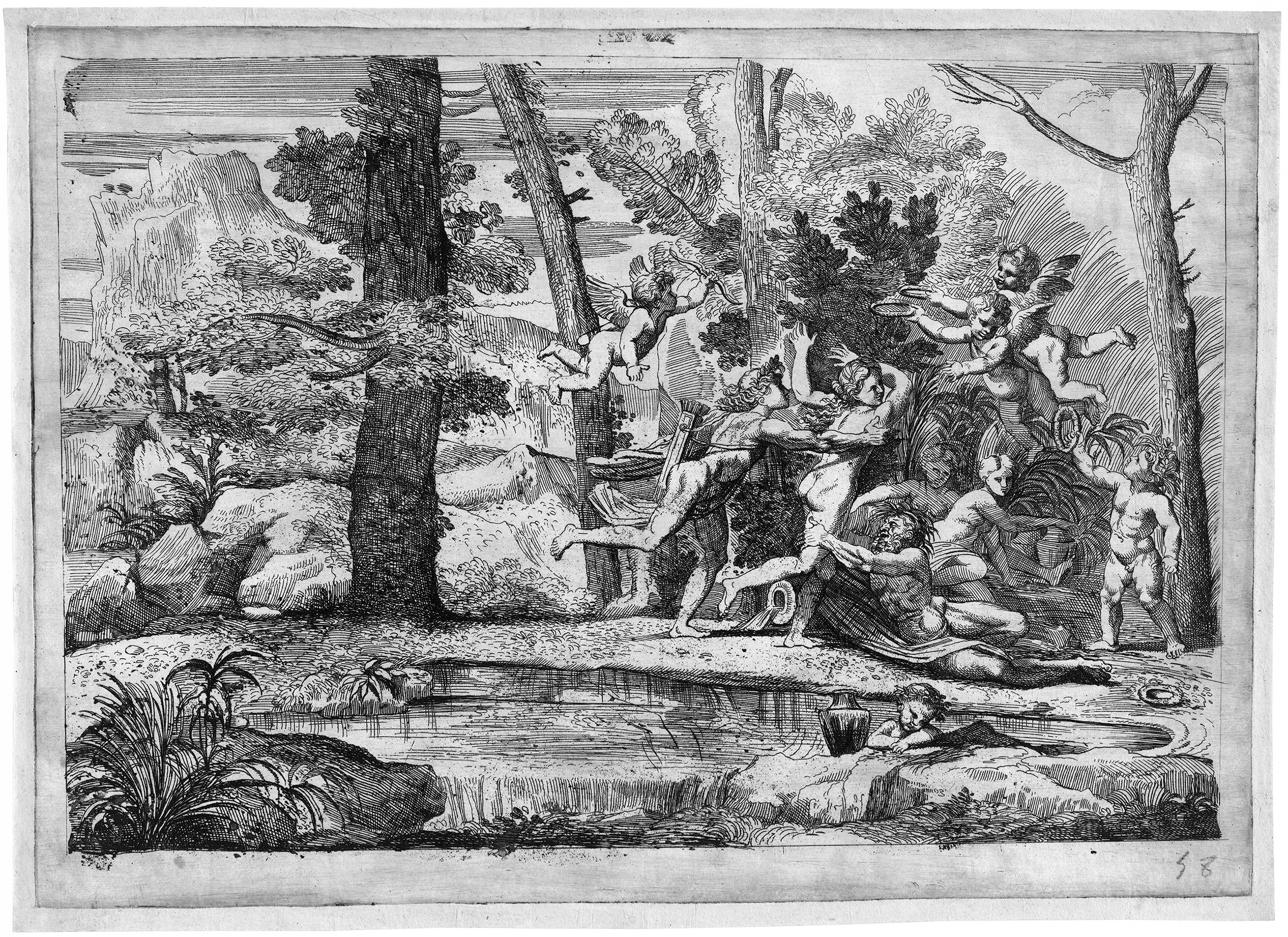Loading the page ...
Claude Massé
(or Macé, 1631? – 1670, Paris)
Apollo and Daphne, after Nicolas Poussin? Etching. 28.8 x 39.7 cm. Le Blanc, from 13–123 I (of II); Robert-Dumesnil VI, 275, 97.
Eberhard Jabach, a banker from Cologne who had lived in Paris since 1638 and was one of the foremost art collectors in the era of Louis XIV, decided in 1666 to have his extensive collection of drawings duplicated in the form of reproductive prints. The project was already under way when Jabach sold a large part of the collection to the French king. This ensemble now belongs to the core of the Louvre collection in Paris. Although other reproductive prints were made after the partial sale of the Jabach collection, the project gradually petered out. All the 287 copper plates remained in Jabach’s possession until his death in 1695.
An attempt to sell them to the French king proved abortive and none of the prints was ever published. It was not until 1754 that a small edition was issued by Jean François Joullain, an engraver and art dealer from Paris. On this occasion the plates were furnished with the letters and the privilege. Only a few prints from this Receuil have survived. Contemporary impressions avant la lettre, like the present one, are of the utmost rarity. One of the five engravers originally employed on the project was Claude
Massé (not his son Charles, as is often mistakenly asserted: see Daniel Alcouffe, “Les Macé, ébenistes et peintres”, Bulletin de la Société de l'histoire de l’art français, 1971–72, pp. 61–82).
Although Massé’s participation was terminated by his premature death in 1670, he appears to have made no less than 99 plates. The present etching reproduces a drawing from the circle around Nicolas Poussin which has now been lost. The right half of the composition is virtually identical with a drawing by Poussin which is in the collection of the Duke of Devonshire in Chatsworth (see P. Rosenberg and L.-A. Prat, Nicolas Poussin, 1594–1665: Catalogue raisonné des dessins, 2 vols., Milan 1994, no. 95). Friedländer and Blunt consider the prototype from the Jabach collection to be the work of an anonymous artist after Poussin (The Drawings of Nicolas Poussin: Catalogue raisonné, vol. 3, Mythological Subjects, London 1953, p. 17). The appeal of this charming and harmoniously arranged composition has to do with its classical nature. The pose adopted by the river god on the right appears to have been directly inspired by Marcantonio Raimondi’s engraving of the Judgment of Paris (Bartsch XIV, 197, 245).
A superb, deep black and contrasting proof impression from the uncleaned plate, with even margins. Avant la lettre, before the numbers and the royal privilege. Old numbering with reddish-brown chalk in the bottom right-hand corner. Minor ageing, otherwise in excellent condition.
Contact us for further information